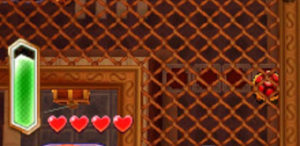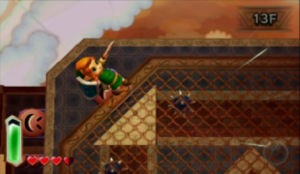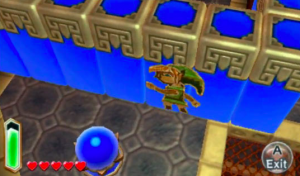[Preview] Five Interesting Things We Know About The Legend of Zelda: “A Link to the Past 2”

Nintendo EAD 3 did a very interesting think with the most recent game in the Zelda canon, Skyward Sword— they, in a sort of contextual manner, removed the ‘A’ roll that aids in moving players across the land in a more brisk fashion, replacing it with a run function accompanied by a stamina bar. It was a pretty unprecedented move in Zelda’s largely rigid gameplay history, and it ended up working out pretty well. Nintendo’s at it again, this time changing up the way items are quantified in a way that is very novel for the company, despite being standard for the rest of the industry.
Instead of having to go break some jars in a preceding room in search of arrows, bombs, or magic flasks before a big boss fight, all aforementioned items appear to have an unlimited supply, but appear to be regulated by something akin to an automatically-refilling-after-a-short-time stamina bar. Consequently, this makes it so you can’t use an item too much within a certain period of time. It’ll be a minor gameplay shift that will probably go unnoticed in the long run, but is certainly noteworthy in that it’s a sign of Nintendo continuing to break out of its bubble and accept industry-standard gameplay mechanics; hopefully, it won’t mean the end of the ever-satisfying breaking of jars, but I doubt Nintendo would take those out, or would even consider this a permanent change in gameplay (more of a trial run/distinguishable gameplay trait when looking back in a few years).

Footage from the dungeon akin to the third temple from A Link to the Past, the switch-themed Tower of Hera, displayed a lot of hammer-launched springboards causing movement back and forth between different levels. Just as Nintendo wished to exquisitely display and single out a system’s innovative functionality with the past four Zelda games (sword-waggling and IR control in Twilight Princess; stylus-based control in Phantom Hourglass and Spirit Tracks; Wii Motion Plus in Skyward Sword), I have no doubt an emphasis will be placed on the 3DS’s stereoscopic 3D feature.
The 3D function legitimately aided the gameplay in 3DS contemporaries Super Mario Land 3D and Mutant Mudds by making layering easier to distinguish, and I have no doubt the complete bird’s eye view ”ALTTP2” utilizes, an obvious intentional throwback, will both benefit greatly and have a unique spin as a consequence of the same feature. While it’s not intrusive and/or important enough of a feature to impact gameplay as motion and touch control, it’ll still be meritorious enough in my mind to impact a few sequences positively, especially in the aforementioned dungeon and similar areas. It also appears as though it will work well in tandem with the shimmy ability.

The use of the stylus to control Link’s movements in Phantom Hourglass was met with justifiable initial skepticism; it felt and looked potentially gimmicky and hackneyed, as if Nintendo was simply trying to demo the DS’s new technology without actual reason, and was messin’ with a tried and true control scheme dating back to the 80’s. As it turned out, touch control ended up being a finely tuned scheme in both live gameplay (rolling by both drawing a small circle or double tapping felt very natural) and in menu and map settings, where it really shined and outperformed orthodox control via sheer intuitiveness and streamlinity. However, there is very good reason to believe Nintendo is already abandoning the control scheme after only two iterations, despite the exact same scheme possible on 3DS.
As you can see above, there’s an ‘A’ icon in the HUD, implying the delegation of the right hand to the directional pad; this would make it impossible to control Link as we did in the past two touch screen iterations of the series (assuming Nintendo isn’t trying to be annoying and force players to switch back and forth), returning control to pre-2007 ways.
While this could be a sign that Nintendo didn’t really have full faith when they implemented touch control in Phantom Hourglass, it could also just be more akin to them accepting industry standards and trying to, in turn, appease the populace– or it could be that they wanted it to feel more like a true sequel to the original and use the same control scheme, or it could even simply be them wanting to temporarily shake things up, just as (potentially) with the stamina bars. Regardless, I really hope touch-based note-taking, especially with dungeon maps in consideration, is still utilized, as it was really, really nifty in Phantom Hourglass and Spirit Tracks.
Excited by the prospect of a sequel to A Link to the Past? Disillusioned? Agree and/or disagree with any of the opinions written above?
Let us at NintendoEverything.com know in the comments section below, and your post will be promptly answered by high noon tomorrow!
Want to participate in more NintendoEverything goodness?
Try our Facebook page!
Or our Twitter page!